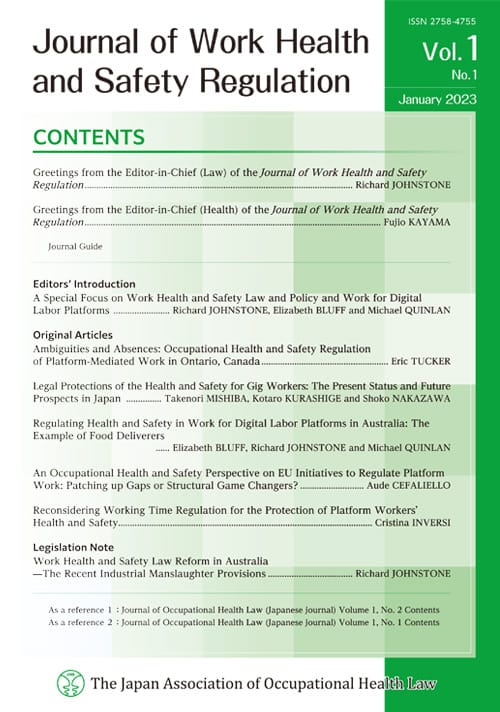This year the South Australian Parliament will likely pass that State’s Industrial Manslaughter (IM) legislation as the introduction of these laws was an election commitment of the new Labor government. The consultation period on the draft Bill closes on February 10 2023 after being open for just over two months.
New South Wales may follow if the Labor Party wins the March 2023 election
Industrial Manslaughter laws under the broader occupational health and safety (OHS) continue to be contentious as a new research paper by Professor Richard Johnstone shows. However, the introduction of IM laws will forever be a political act at its core.
The latest, and first, edition of the Journal of Work Health and Safety Regulation, edited by Johnstone, Fujio Kayama and others, includes a “legislation note” called “Work Health and Safety Law Reform in Australia – The Recent Industrial Manslaughter Provisions”. It is an excellent summary of the five jurisdictions that have IM laws.
Johnstone reminds us to take care speaking of Industrial Manslaughter as a fixed and consistent law. Each State’s and Territory’s IM laws have different eligibilities and applications. There is little harmony in these laws. Johnstone mentions that Marie Boland recommended that the Model Work Health and Safety laws be amended to include Industrial Manslaughter:
“This recommendation was rejected by the Work Health and Safety Ministers in May 2021; however, the incoming Federal Labor Government, elected in May 2022, has indicated that it intends to implement all of the recommendations of the review.”
page 162

Prime Minister Anthony Albanese has many industrial relations matters on his plate in 2023, and the business lobbyists have not been impressed with some of these proposed changes. Their nervousness is increased by some of the messages from Treasurer Jim Chalmers that some rabid right-wing media has described as communism. The introduction of Federal Industrial Manslaughter laws may be seen as another example of “business bashing” but Albanese could argue that the introduction of IM laws at the national level would be able to minimise some of the jurisdictional variations, which would be attractive to business owners due to the clarification.
Johnstone mentions how some of the laws apply not only to the deaths of workers. He writes:
“The Victorian provisions are narrower than the Queensland and Northern Territory provisions because the employer and self-employed person’s duty in Victoria is narrower than the PCBU’s duty in the Work Health and Safety Acts. However, the Victorian provisions are broader than the Queensland provisions in that manslaughter includes deaths caused to persons who are not employees (and in particular, members of the public);…”
page 160
Could this be part of the reluctance of the managers of the St Basil’s Aged Care Home in Victoria, who refused to answer questions during the coronial inquest into the deaths of 50 residents? There is no indication that IM prosecutions would be pursued by WorkSafe Victoria, which is conducting an investigation into the deaths under OHS laws.
All indications are that Industrial manslaughter laws will continue to pop up in regional political debates whenever the Labor Party takes power. This process may be shorter if the Federal (Labor) government upholds its promise to implement Boland’s recommendation, which included a federal industrial manslaughter law. Lawyers and academics will debate the combination of eligibilities and applications preferred by each jurisdiction.
What should be remembered is that these IM debates are about the law and not the prevention of harm. If it was, the debates would be muted as there is very little evidence that IM prosecutions for breaches of OHS laws improve work health and safety conditions and prevent harm. Johnstone points out that IM prosecutions have been few in Australia and that those prosecuted have been owners of small businesses and, therefore with little influence.
What is clear is that the Journal of Work Health and Safety Regulation published biannually by the Japan Association of Occupational Health Law has a bright future.


One thought on “Industrial Manslaughter laws are spreading in Australia but are inconsistent [Open Access]”